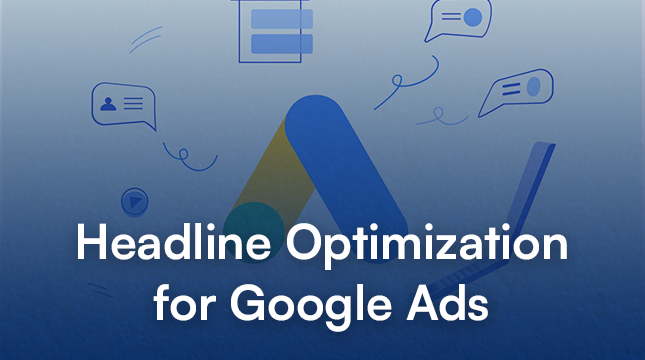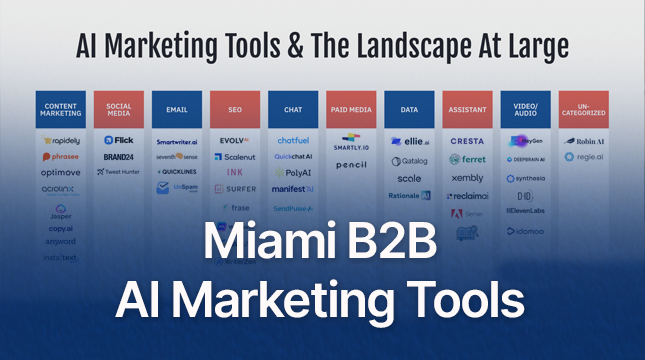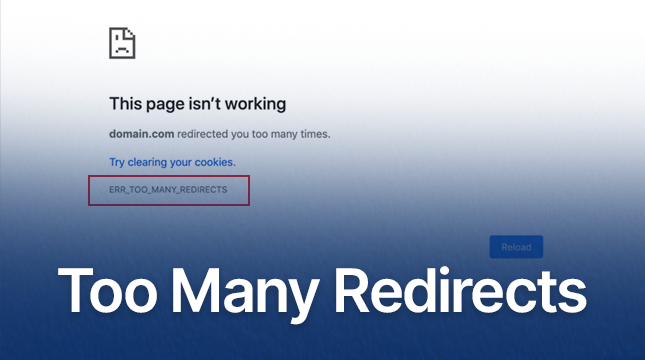This website uses cookies so that we can provide you with the best user experience possible. Cookie information is stored in your browser and performs functions such as recognising you when you return to our website and helping our team to understand which sections of the website you find most interesting and useful.
Headline Optimization for Google Ads

In the bustling world of digital marketing, headlines play a pivotal role. They are the first impression, the hook, and often the deciding factor in whether a potential customer clicks on your ad. Today, we’re diving into the art and science of headline optimization for Google Ads, a crucial skill for anyone looking to maximize their ad performance and ROI.
Understanding Google Ads
Overview of Google Ads
Google Ads is a powerful advertising platform that allows businesses to reach potential customers through targeted ads on Google’s search engine and its partner sites. With billions of searches happening every day, Google Ads provides a unique opportunity to connect with users actively seeking information or solutions that your business can provide.
How Google Ads Work
When you create a Google Ad, you enter a bidding system where you compete with other advertisers to display your ad. The visibility and placement of your ad depend on factors like bid amount, ad quality, and relevance. Headlines, being the first thing users see, play a significant role in this process.
Read More : search google or type a url
The Role of Headlines in Google Ads
Importance of Headlines
Headlines are more than just a string of words; they are the essence of your ad. A well-crafted headline can grab attention, convey your message, and compel users to click. It’s your elevator pitch, condensed into a few impactful words.
How Headlines Impact Ad Performance
Headlines directly influence your ad’s click-through rate (CTR). A higher CTR not only drives more traffic but also improves your ad’s quality score. This can lower your cost per click (CPC) and increase your ad’s position, making headline optimization a crucial aspect of your Google Ads strategy.
Read More : A Comprehensive Guide to SERP Analytics : Conquering the Search Engine Landscape
Key Elements of an Effective Headline
Relevance
Your headline must be relevant to the search query. It should promise to solve the user’s problem or fulfill their need, matching their search intent as closely as possible.
Keywords
Including primary and secondary keywords in your headline is essential. This not only improves relevance but also helps your ad appear in more searches.
Emotional Trigger
Emotions drive actions. Crafting headlines that evoke curiosity, urgency, or excitement can significantly increase engagement.
Clarity
A clear and concise headline is easy to understand and digest. Avoid jargon and ensure that your message is straightforward.
Call to Action
Encouraging the user to take the next step can be as simple as adding a call to action (CTA) in your headline. Words like “Buy,” “Discover,” or “Learn” can guide users towards clicking your ad.
Researching Keywords for Your Headlines
Using Google Keyword Planner
Google Keyword Planner is a fantastic tool for discovering relevant keywords. It helps you find keywords that your target audience is searching for, providing insights into search volume and competition.
Analyzing Competitor Headlines
Look at what your competitors are doing. Analyze their headlines to understand what works and what doesn’t in your industry. This can provide valuable inspiration and highlight opportunities for differentiation.
Long-Tail vs Short-Tail Keywords
Long-tail keywords are more specific and often less competitive than short-tail keywords. Using a mix of both can help you capture a broader audience while also targeting niche segments effectively.
Crafting Compelling Headlines
Tips for Writing Engaging Headlines
- Be Specific: Clearly state what the user will get.
- Use Numbers: Numbers and statistics catch the eye and add credibility.
- Ask Questions: Questions can engage curiosity and invite users to find the answer by clicking.
- Use Power Words: Words like “Free,” “Instant,” and “Exclusive” can trigger a response.
Common Mistakes to Avoid
- Overstuffing Keywords: This can make your headline sound unnatural.
- Being Too Vague: Users need to know what you’re offering.
- Ignoring Grammar: Poor grammar can diminish trust and professionalism.
Testing and Refining Your Headlines
A/B Testing Explained
A/B testing involves creating two versions of your ad with different headlines to see which performs better. This can help you identify what resonates most with your audience.
Tools for Testing Headlines
Tools like Google Optimize, Optimizely, and Unbounce can facilitate A/B testing, providing detailed analytics on performance.
Interpreting Test Results
Look at metrics like CTR, conversion rate, and engagement time to understand which headline works best. Use this data to refine and improve your headlines continuously.
Advanced Strategies for Headline Optimization
Dynamic Keyword Insertion
Dynamic Keyword Insertion (DKI) allows your ad to automatically update with the keyword a user searches for, making your headline more relevant and personalized.
Personalization
Personalizing your headlines based on user demographics, location, or past behavior can increase relevance and engagement.
Leveraging Trends and Seasonality
Tailoring your headlines to current trends or seasonal events can capture timely interest and boost performance.
Using Analytics to Improve Headline Performance
Key Metrics to Track
- Click-Through Rate (CTR): Measures how often people click on your ad after seeing it.
- Conversion Rate: The percentage of users who take the desired action after clicking.
- Quality Score: Google’s rating of the quality and relevance of your keywords and ads.
Adapting Headlines for Different Ad Formats
Text Ads
Text ads are simple but require precision. Make every word count and ensure clarity and relevance.
Responsive Search Ads
These ads allow multiple headlines and descriptions, which Google then combines to find the best performing combination. Use this flexibility to test different messages.
Display Ads
Visuals complement headlines in display ads. Ensure your headline aligns with the imagery to create a cohesive message.
Common Pitfalls in Headline Optimization
Overuse of Keywords
While keywords are important, overstuffing can make your ad look spammy and reduce readability.
Clickbait Headlines
Misleading headlines may get clicks but will hurt your credibility and increase bounce rates.
Ignoring Mobile Users
With a significant number of users on mobile, ensure your headlines are mobile-friendly and readable on smaller screens.
The Future of Headline Optimization in Google Ads
AI and Machine Learning in Ad Copywriting
AI is transforming ad copywriting, providing tools that can generate optimized headlines based on data and trends.
Emerging Trends
Voice search optimization, interactive ads, and personalization are trends to watch. Staying ahead of these can give you a competitive edge.
Conclusion
Headline optimization for Google Ads is a blend of art and science. By understanding your audience, researching keywords, crafting compelling messages, and continuously testing and refining, you can create headlines that drive clicks and conversions. Stay adaptable and keep an eye on emerging trends to ensure your ads remain effective and engaging.

Let's Start Your Project
Get free consultation for your digital product idea to turn it into reality!
Get Started






